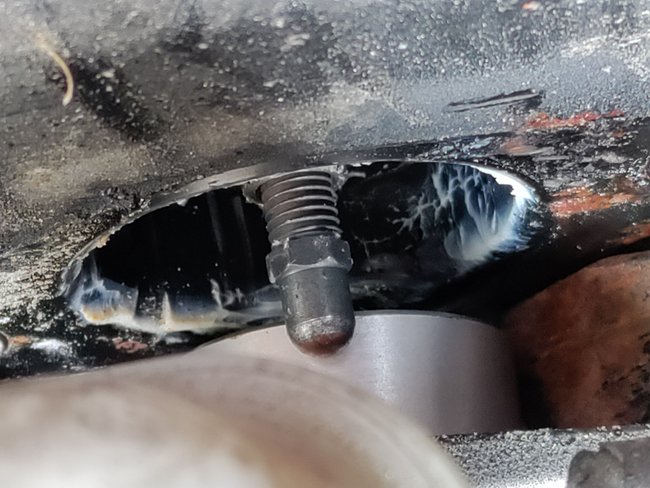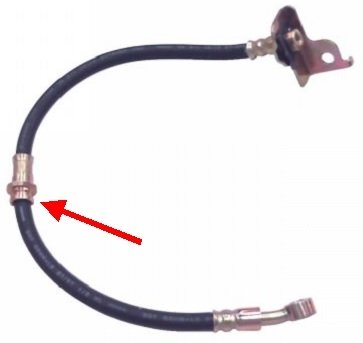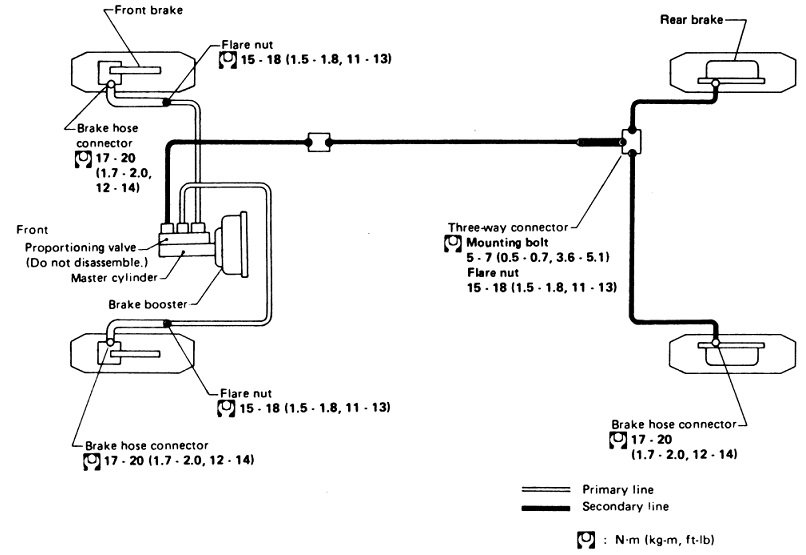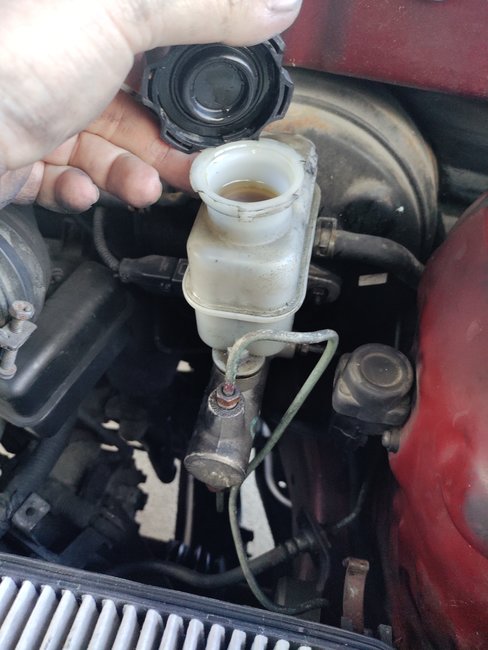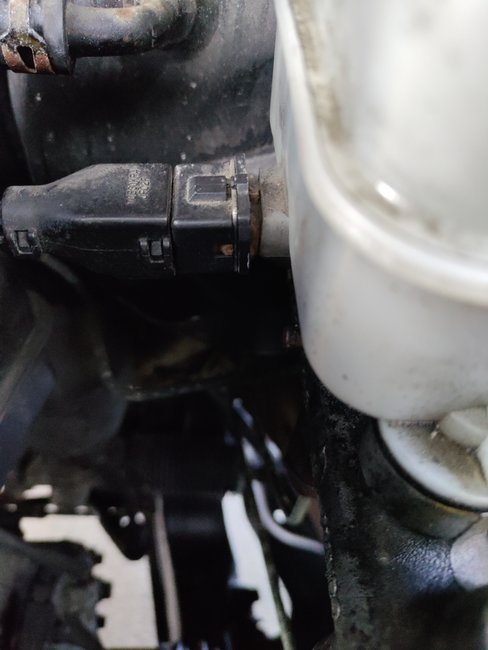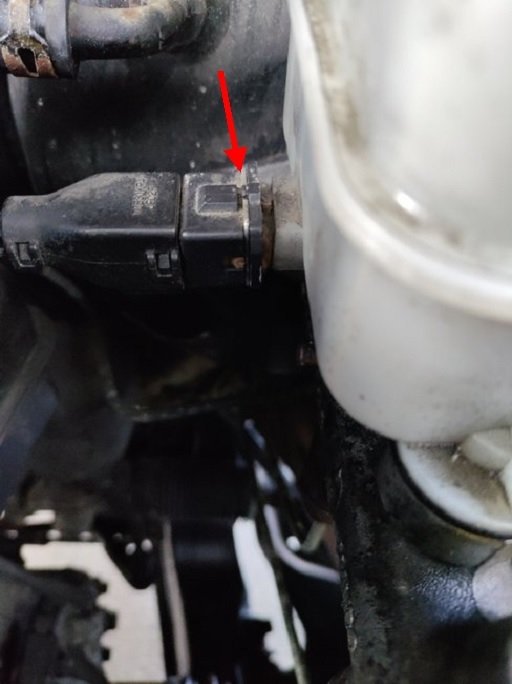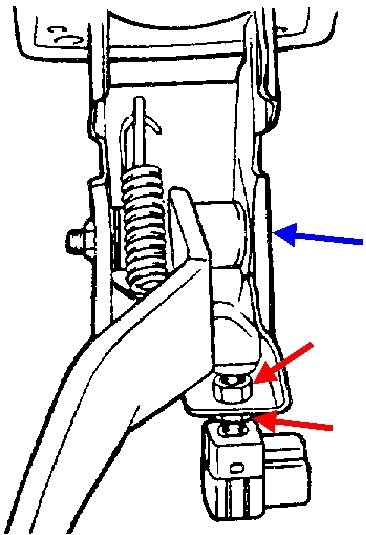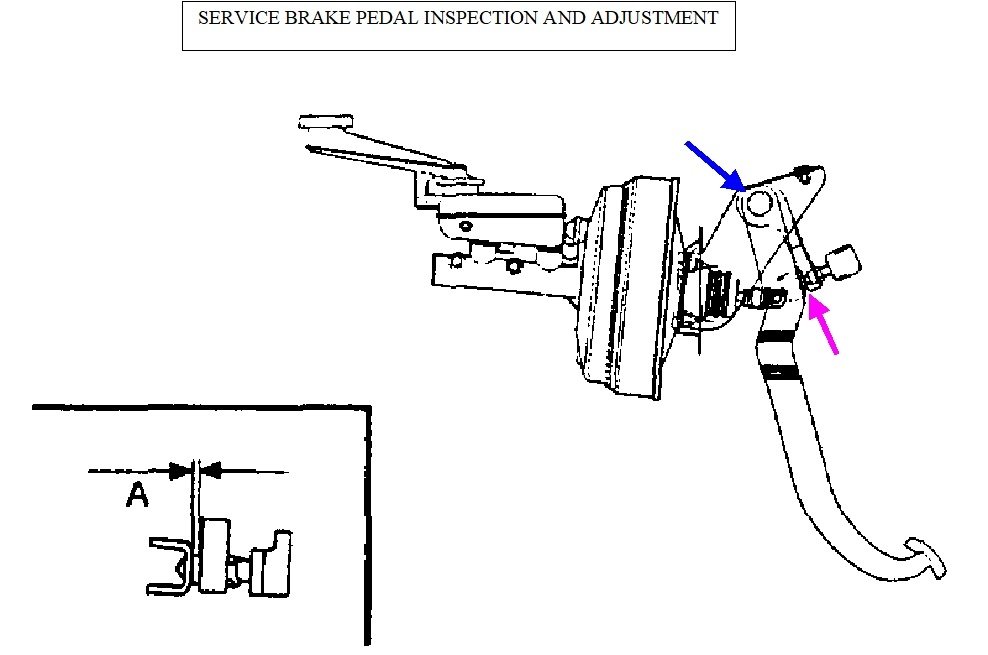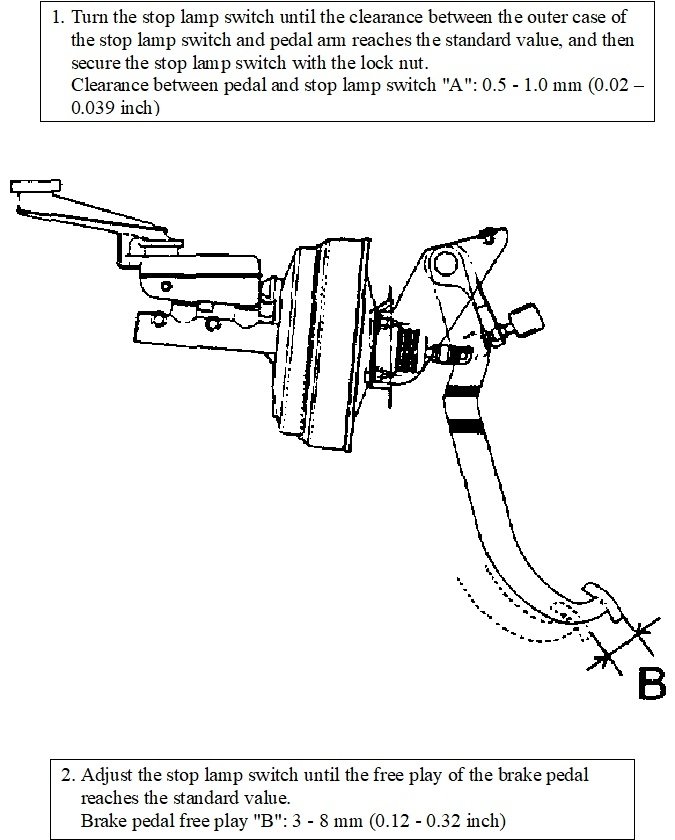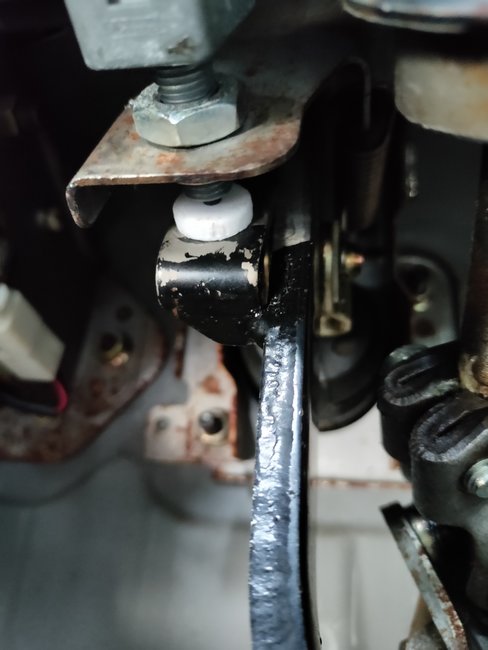This dandy photo is of the push rod coming out of the power booster. Most often when these are adjustable, like it is here, it is on import models. It's rarely adjustable on domestic models. Readjusting that is not going to solve anything. This is not meant to be readjusted except for when it is first installed on the vehicle. If the pistons in the master cylinder are not fully retracting, it is usually due to the brake light switch is misadjusted and holding the brake pedal down an inch or so. You can often identify that by pulling the brake pedal up with your foot when the brakes are locking up.
The most common cause of the symptoms you described are the flexible brake hoses, but you replaced those already. Rust build-up develops under the crimped fitting by the red arrow. Other models often have a mounting bracket crimped around the middle of the hose. Rust builds up inside the crimp too and constricts the hose. You can force some brake fluid through the restriction with your foot, but the fluid can't release back to the reservoir. Those crimps can be opened up with a pliers or large screwdriver to remove the restriction. The best way to identify these as the cause is that one brake caliper will release when the bleeder screw is opened, but next time it happens, it will remain locked if the steel line is loosened at the master cylinder.
When this happens, the brake drags enough to generate heat. That heat migrates to the brake fluid causing it to expand. That makes the trapped fluid apply the caliper even harder, then the pads generate even more heat until that brake locks up.
As a point of interest, a lot of vehicles today, especially front-wheel-drive vehicles, use a "split-diagonal" brake hydraulic system that pairs one front brake with the opposite rear brake on one circuit. Usually when locking brakes occur, it only affects one front brake first, but if both are locking with split-diagonal systems, you have to loosen both steel lines at the master cylinder to release both front brakes, or you have to open both front bleeder screws on the calipers at the same time. If you're parked on a slight incline and shifted to "neutral", the vehicle will start to creep downhill when you open both hydraulic systems at the same time. Suggest you place a block of wood about a foot down hill of one tire so you don't look funny chasing after the vehicle! More on this in a moment.
Update: I found the brake line routing diagram from Auto Zone. It's the second drawing below. It shows you have the standard front and rear hydraulic circuits. Even better, the two front lines start right at the master cylinder. That makes it convenient for loosening them to let brake fluid release.
Proportioning valves are not adjustable and are usually not in the master cylinder. (Trucks and minivans, and other models that can see a wide variety of loading in the rear often do use an adjustable height-sensing proportioning valve, but those are mounted in the rear, and won't cause locking brakes). Those are a story for another day. When proportioning valves are up in front, they're inside the combination valve assembly, and they are very carefully calibrated for the specific model with its unique set of optional equipment, (weight). These are definitely not a one-size-fits-all part. They rarely cause a problem. That said, yours is one of the few models that do put the proportioning valve in the master cylinder. They can be replaced separately, but they rarely cause trouble.
Many models don't have a proportioning valve if the vehicle came with anti-lock brakes. That opens up a whole new area of discussion. We always wonder if a sticking or leaking valve in the hydraulic control assembly is responsible for dragging or locking brakes, but I don't ever recall anyone solving such a problem by replacing that controller. That should be our last suspect on the list. Good stuff has to happen inside that controller when you're in a skid, but during normal driving and everything is relaxed, or off, every fluid passage is open for fluid to flow freely in both directions. At worst, a leaking or sticking valve would cause a low and mushy brake pedal.
That brings me to my best suspect after the flex hoses, (and related to your "Update # 2), but I really hope I'm wrong. That is brake fluid contaminated with a petroleum product. That includes engine oil, transmission fluid, power steering fluid, axle grease, and penetrating oil. I've been involved with three of these since the mid '80s. Rubber parts that contact brake fluid are not compatible with petroleum products. They will expand and become mushy. In the master cylinder, the seals on the pistons will grow past the fluid return ports and block them. That's what traps the brake fluid and keeps the calipers dragging and building heat. With this cause, the brakes will release when you open the hydraulic system anywhere, most importantly the two steel lines coming out of the master cylinder. If that lets them release, that proves everything else is clear and unobstructed. The lip seals inside the master cylinder are the only thing left, so this is pretty conclusive.
As I alluded to earlier, a misadjusted brake light switch can hold the brake pedal down. That also holds the lip seals past the fluid return ports, so the symptoms will be the same, but that rarely occurs on its own. This typically shows up after other work was done in the area, and pulling the brake pedal up with your foot lets the brakes release.
If the brakes do not release when you loosen the lines at the master cylinder, that's good news as it suggests this may not be due to contaminated brake fluid. Now, work your way down the line to the next connection that you can loosen and let brake fluid escape. When you reach the first one that lets the brake release, you just reached or just passed the restriction.
The reason I hope I'm wrong is the only proper repair for contaminated brake fluid is to remove every part that contains rubber that contacts the brake fluid, flush and dry the steel lines, then install all new parts. That includes replacing the new calipers and hoses. It does not include the power booster or any rubber caliper mounting parts. The only exception, although it makes me nervous, is if the contamination is caught right away, as in within a few hours of its introduction. I do know people have quickly replaced just the master cylinder and gotten away with it, but that definitely doesn't apply if the brake fluid was bled all the way down to the calipers and wheel cylinders. If it comes to that, I have a simple trick that allows a master cylinder to be replaced with no need to bleed the system anywhere else other that right at the ports on the master cylinder. Another story for another day.
For contamination that occurred some time ago, if any rubber parts are not replaced, such as the combination valve that is often overlooked, the contamination will leach out of it and recontaminate the new brake fluid. That might go with no continuing symptoms, but it's not really worth the risk. Unfortunately, the cost of this repair can render an older vehicle not worth repair, especially if you have to pay a shop to do the work.
For the three vehicles I was involved with, the calipers, wheel cylinders, rubber flex hoses, combination valve, master cylinder, and the rubber bladder seal(s) under the reservoir caps were all replaced. Those bladder seals are another clue to fluid contamination. They'll blow up and pop out of the cap when removed, and you won't be able to poke them back in. They'll feel slimy too.
The other observation you mentioned is the brake pedal becomes high and hard. That is proof the brake fluid is pushing the pistons in the master cylinder back. Normally that clue points to constricted flex hoses. The fluid has to be getting past the fluid return ports to get to the front of the lip seals in the master cylinder. That clue gives me hope this is not an expensive fluid contamination problem.
See how far this gets you and let me know what you find. We'll figure out where to go next.
Images (Click to make bigger)
Monday, April 11th, 2022 AT 8:04 PM
